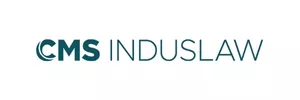- within Litigation, Mediation & Arbitration, Family and Matrimonial and Environment topic(s)
- with Inhouse Counsel
- in European Union
- with readers working within the Technology, Utilities and Law Firm industries
In this newsletter, we look at certain key regulatory and judicial developments during the first half of 2023 (January - June) for the insurance sector in India, including key regulatory and other measures notified by the Insurance Regulatory and Development Authority of India ("IRDAI").
Market bulletin
Key market developments in the first half of 2023 included the following:
- As of June 30, 2023, the total number of registered life insurers in India was 26. This included new entrants, Acko Life Insurance Limited, Credit Access Life Insurance Limited and Go Digit Life Insurance Limited.
- For the six months ended on June 30, 2023 and compared to the six months ended on June 30, 2022, the non-life insurers and health insurers saw a growth of 16.49% and 26.53%, respectively, in their gross direct premium income underwritten.1 However, during the quarter ended June 30, 2023, as compared to the same quarter last year, life insurers saw a decline of 0.9% in their premium collected.2
- In June this year, HDFC Limited acquired an additional 0.5097% equity stake in HDFC Ergo General Insurance Company Limited, for an undisclosed amount and an additional 0.69% equity stake in HDFC Life Insurance Company Limited for a reported consideration of INR 1 billion (~USD 121 million), thereby increasing its aggregate equity holdings in these companies to 50.5% and 49.3%, respectively.
- In April, Girnar Insurance Brokers Private Limited ("InsuranceDekho"), an insurtech platform owned by Girnar Software Private Limited ("CarDekho"), acquired Verak, a Mumbai-based insurance distribution network firm for small and medium enterprises. for an undisclosed consideration.
- In March, Go Digit General Insurance Limited ("Go Digit") filed a revised draft red herring prospectus with the Securities and Exchange Board of India ("SEBI"). The revised document was filed after Go Digit converted its stock appreciation rights plan for employees to a stock option plan, which was reportedly done due to certain concerns raised by SEBI with the earlier plan.
- In February, Goldman Sachs Asset Management and TVS Capital Funds led an INR 12 billion (~ USD 150 million) investment, together with Investcorp, Avataar Ventures and LeapFrog Investments, in InsuranceDekho. This was reportedly the largest series A funding round in an insurtech startup in India.
IRDAI issues revised guidelines on foreign reinsurers
Foreign reinsurers can now obtain their Filing Reference Number ("FRN") from the IRDAI with a 3 year validity period and need not apply every year to renew their FRNs. This relaxation was introduced by the IRDAI through revised guidelines issued in January.3
An FRN is required by any foreign reinsurer that wishes to underwrite reinsurance in India without establishing a formal place of business. Such foreign reinsurers must also satisfy the eligibility criteria prescribed by the IRDAI, which includes maintaining the required solvency margin or capital adequacy requirements prescribed in their home jurisdiction, a minimum BBB credit rating from S&P or equivalent rating from an international credit rating agency and their home jurisdiction having signed a double taxation avoidance agreement with India.
However, under the revised guidelines, to obtain an FRN with the longer, 3- year validity period, foreign reinsurers need to satisfy additional criteria, including a minimum A- credit rating from S&P or other international credit rating agency.
No changes to the list of systemically-important insurers
Life Insurance Corporation of India, General Insurance Corporation of India and New India Assurance Company Limited continue to be classified as 'Domestic Systemically Important Insurers' ("D-SIIs"). This was confirmed by the IRDAI through a press release issued in March this year.4
D-SIIs, in basic terms, are insurers that are deemed 'too big to fail' and were first identified as such by the IRDAI in September 2020, based on certain guidance provided by the IRDAI's committee on D-SIIs and certain methodology recommended by the International Association of Insurance Supervisors (an international standards-setting body) for identifying D-SIIs.5
The IRDAI identifies D-SIIs through four parameters, which are based on total revenue, extent of global operations, substitutability of products and/ or operations, and interconnectedness through counterparty and macroeconomic exposure.
D-SIIs in India are subject to additional regulatory supervision and need to follow higher standards of corporate governance. In particular, they need to submit peer review reports as part of their annual actuarial valuation and quarterly asset and liability management returns; requirements that other insurers are generally exempted from.
Continuation of rationalization of filing requirements
In January this year, continuing the process of rationalizing filing requirements for Indian insurance companies, the IRDAI discontinued certain reinsurance returns6 with immediate effect. 7 Our previous newsletters have discussed similar relaxations previously notified by the IRDAI.8
Click here to continue reading . . .
Footnotes
1. General Insurance Council of India, Monthly business statistics, available at https://www.gicouncil.in/statistics/industry-statistics/segment-wise-report-on-homepage/; last accessed on June 30, 2023.
2. Life Insurance Council of India, Monthly business statistics, available at https://www.lifeinscouncil.org/industry%20information/NewBusinessPerformance; last accessed on June 30, 2023.
3. IRDAI Circular on Guidelines on issuance of File Reference Number (FRN) to Cross Border Re-insurers dated January 03, 2023, available at https://irdai.gov.in/document-detail?documentId=1640570; last accessed on June 30, 2023.
4. IRDAI Press release on List of Domestically Important Insurers, dated March 31, 2023, available at https://irdai.gov.in/document-detail?documentId=3226997; last accessed on June 30, 2023
5. IRDAI Committeeon Domestically Systemically Important Insurers (D-SIIs), Press release ref no. IRDA/F7A/ORD/MISC/017/01/2019, dated January 23, 2019, available at https://irdai.gov.in/document-detail?documentId=390580 and IRDAI's Press release on D-SIIs dated September 24, 2020; last accessed on June 30, 2023.
6. The following forms have been discontinued with immediate effect: (i) form 1.1 – Summary of reinsurance treaties; (ii) form LR-2 – Particulars of surplus treaty; (iii) form LR-4 – Particulars of quota share treaty; (iv) form LR-6 – Particulars of excess of loss cover/ catastrophe treaty; (v) form LR-9 – Date uploading format for reinsurance rate data; (vi) statement 1 – Statement of reinsurance statistics; (vii) statement 2 – Reinsurance details – In force; and (viii) statement 3 – Reinsurance details – Withdrawn.
7. IRDAI Circular on Submission of Reinsurance Returns, dated January 3, 2023, available at https://irdai.gov.in/document-detail?documentId=1640469; last accessed on June 30, 2023
8. See page 5 of our previous newsletter for June- December 2022 (available at https://tinyurl.com/bdzepxk9) and page 3 of our previous newsletter for April-June 2022 (available at https://tinyurl.com/bt2nuumd).
The content of this article is intended to provide a general guide to the subject matter. Specialist advice should be sought about your specific circumstances.


